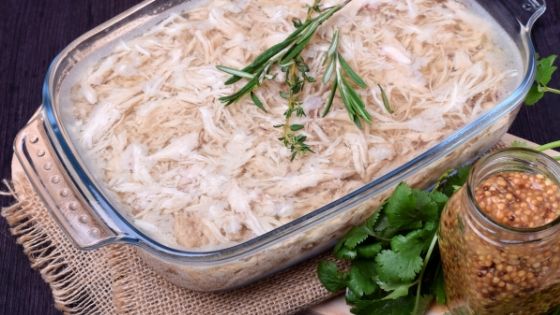You can’t compare the flavor of home-raised poultry to the flavor of birds that are raised commercially. If you’re raising your own birds for meat, you’ve probably looked at how you should be storing the meat after you’ve harvested the birds. Canning chicken or other poultry meat will free up some of your freezer space and gives you an easy, go-to option when you are cooking.
Before you start canning poultry, it’s important to discuss the risks to ensure that you process your canned chicken safely. Chicken and other meat is considered a low acid food. This means that it has a pH of more than 4.6. The low pH creates an ideal environment for the bacteria Clostridium botulinum, the bacteria that is known to cause botulism, a deadly foodborne illness. Because of this, there is no safe way to can poultry using a water bath. Poultry meat must be canned using a pressure canner.

Canning Poultry
The best canned chicken meat comes from larger chickens, not smaller fryers. The larger chickens have meat with more flavor. These birds create more flavorful canned meat. If you’re planning on canning poultry, you’ll need to plan to do this on the same day or the next day after you harvest your birds. The safest way to can poultry meat is to use freshly killed, dressed, healthy, clean and chilled chickens. Chill the chicken in the refrigerator for 6-12 hours before you start processing it. Don’t use frozen meat to can. Thaw out frozen meat in the fridge, under cold water or in the microwave (just don’t over thaw it).
Start by cutting of any large chunks of fat. Remove any large bones that are present. You can process the jars with bones in them, but it’s easier to fit the meat into the jars if the bones are removed. Rinse the meat. Cut the meat into either 1” wide strips, cubes or chunks. Poultry meat can be preserved in jars using a hot pack method or a raw method. Typically when a raw method is used, the meat is fatty and creates juice inside of the jar during canning. Poultry meat doesn’t contain much fat, so it doesn’t usually create much juice. Raw packing poultry meat is safe, but you may find that the quality using the hot pack method is better.
To hot pack the jars, cook your chicken until it’s about 2/3 of the way done. Cook it by either steaming, boiling or baking the meat. Once it’s cooked, pack the meat loosely into hot jars, leaving 1 ¼ “ of space at the top of the jar. Add boiling broth or water to the jar, leaving 1 ¼ “ space at the top. Add 1 teaspoon of salt for quart jars and ½ teaspoon of salt for pint jars if you want to. Use a butter knife to gently poke into the jar and remove any air bubbles. Use a clean rag and wipe the rim of the jars before putting on the lids and bands.
Raw packing the jars can save time as you don’t have to cook the meat before packing your jars. Add 1 teaspoon of salt per pint or 2 teaspoons of salt per quart if desired in the raw pack jars. Fill the jar until you have 1 ¼ “ head space at the top of the jar. Do not add liquid to raw packed jars. Wipe the rims of the jars before putting on the lids and bands.
*Tip- While you are preparing your meat, keep your jars hot. You may also want to warm up your lids by putting them in a small pan on the stove and covering them with water. Heat them over low so that they are warm, but not too hot to handle.
For boneless meat, process pints for 75 minutes and quarts for 90 minutes. Poultry meat that has bones in it is processed a little faster. Process bone-in meat in pints for 65 minutes and quarts for 75 minutes. Set the pressure of your canner using the following information:
• Dial-gauge pressure canners- Process at 11 pounds of pressure in altitudes between 0-2,000 ft. For altitudes between 2,001-4,000 feet, process at 12 pounds of pressure.
• Weighted gauge pressure canners- Process at 10 pounds of pressure for altitudes less than 1,000 feet. For altitudes above 1,000 feet, process at 15 pounds of pressure.
If you’re looking for other methods to preserve your harvest look no further than Methods For Preserving Fresh Garden Vegetables.